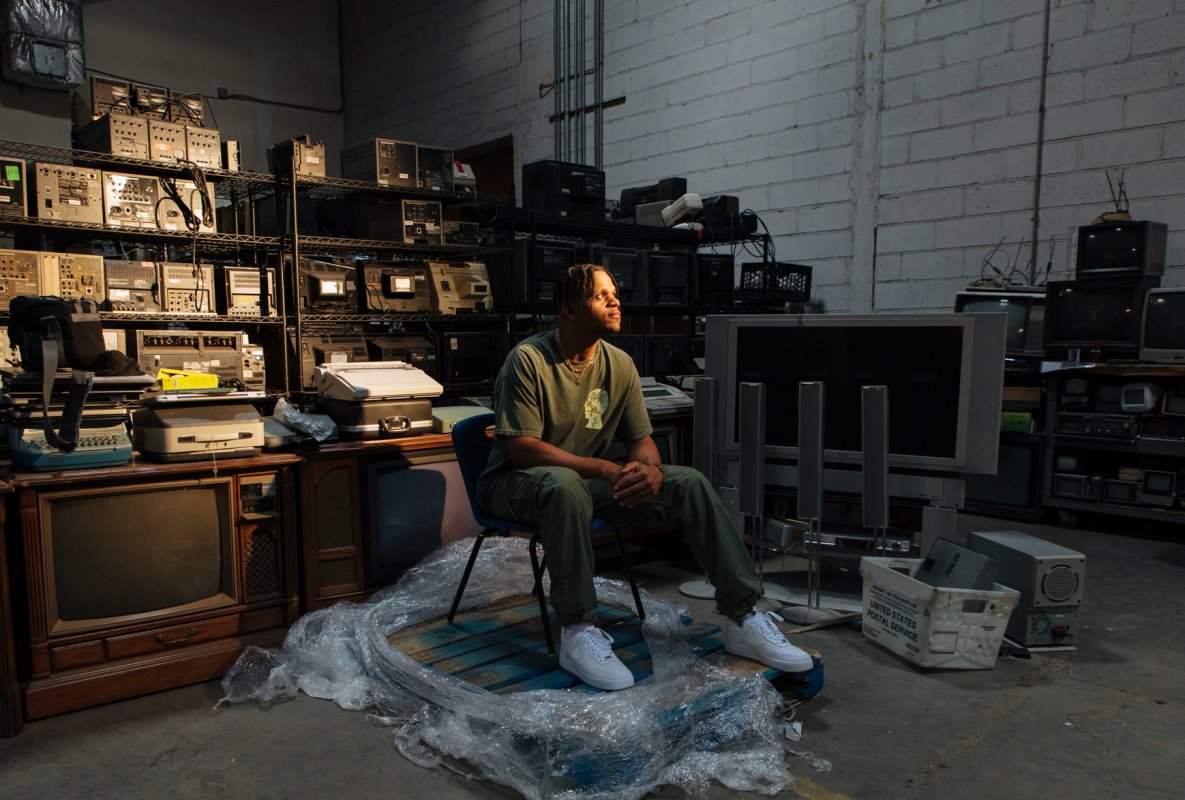Through sculpture, video, and digital interventions, American Artist’s “thought experiments” create a potent space for examining urgent issues at the intersection of race, technology, and knowledge production. Foregrounding Black studies and experimentation, their ever-evolving body of work, materially, aesthetically, and conceptually prompts viewers, in the artist’s words, to “remain critical of the social conditions that we take for granted.” Frequently engaging in performative, provocative, and unpredictable public conversations, they create spaces where one “gets to see people’s minds crack open over ideas.”
Evaluating how history and information have been used, by whom, and to what end undergirds many of their works. Consider the act of them legally changing their name in 2013, as one of radical opacity, to use writer Édouard Glissant’s term. Type the words American Artist in Google and wade through a technological maze, rendering them less traceable for surveillance while coming face-to-face with a list of celebrated White Men. This re-naming simultaneously critiques a too-long-held received idea and celebrates not only who an American artist can be – but already is.
Many of their works invert fraught histories. In 2020, during the height of the protests after George Floyd’s murder, many businesses and institutions boarded their windows. Given the history of museums relationship to looted art – and invited to create a piece for the Whitney Museum’s website - American Artist removed all the artwork images on the website, replacing them with pictures of plywood boards. The name of this intervention? Looted.
photo: Giancarlo Valentine


